The hyoid. Must we work so aggressively? Manual interventions to the anterior neck take many forms. My early training taught us to grasp the hyoid at the posterior aspect to check alignment and “freedom.” Though never told to squeeze, when I received this work from other students and later, as part of treatment, the grip… Continue Reading
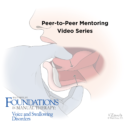
Incorporating manual therapy
Incorporating manual therapy into current interventions: Tips from peers. In the eleven years that the Foundations in Manual Therapy: Voice and Swallowing Disorders course has been taught, one of the more frequent questions facing new learners is a deeper understanding of how manual therapy (and shared decision-making) is to be incorporated into the treatment routines… Continue Reading
Seeing the Forest for the trees: Putting fascia in perspective when treating the whole person
Seeing the forest for the trees: Putting fascia in perspective when treating the whole person. (Placing individual tissue perspectives into context) Fascia is a hot topic among many health and fitness professionals, but why so? Can we treat fascia? As an isolated structure, can we, beyond a reasonable doubt, be accurate in blaming fascial problems… Continue Reading
A FEES view of manual therapy
A FEES view of manual therapy For most, getting the opportunity to visualize how manual therapy impacts internal structures is a rare event. I’m fortunate to have owners of FEES devices bring them to select Foundations in Manual Therapy: Voice and Swallowing Disorders classes, allowing us to view those images. The methods taught in the… Continue Reading
Foundations in Manual Therapy: Oral Motor Dysfunction
Foundations in Manual Therapy: Oral Motor Dysfunction Course Description This 4-hour, non-credit class offers the learner a focused look into manual therapy to address oral motor concerns. Content from the Foundations in Manual Therapy: Voice and Swallowing Disorders is repeated in this shorter class. Link to the online course Continue Reading
Retrolaryngeal manual therapy for voice and swallowing-related issues
We record a good amount of video at each live Foundations in Manual Therapy: Voice and Swallowing Disorders class, including myself, training the clinicians who act as teaching assistants. When I mention the apparent asymmetry of her anterior transverse processes, notice the variation in the SCM landscape. Is asymmetry a problem, the “cause,” or is… Continue Reading
Palpation: An Art of Not Knowing
Palpation: An Art of Not Knowing Learning palpation, to feel what we need to feel in order to intervene, is a source of frustration for newcomers to the manual therapy field. As I teach my Foundations in Manual Therapy: Voice and Swallowing Disorders course to SLP and others, many of who’ve yet to be exposed… Continue Reading
Visual impacts of manual therapy
Internal views of externally applied interventions are a great way to see how touch may impact. Nothing guarantees change, but knowing what we know about patient perspectives and inclusion if we are able to reach and create awareness to centers responsible for voice and swallowing disorders, our chances of introducing change is quite good. Thanks… Continue Reading

Riffs and mods
Riffs and Mods Most of us learn manual therapy (MFR, massage, trigger point work, etc.) from a specific paradigm, one that defines a protocol or sequence. That sequence is based on the perception of tissue-based problems and tissue-based solutions. MFR was said to be non-protocol-based, but even they define their terms and rules: always wait… Continue Reading
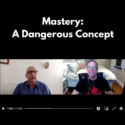
Mastery: A Dangerous Concept
Mastery: A Dangerous Concept Recently Scott Dartnall, RMT, and I sat down for a talk on the concept of mastery in manual therapies. Keeping humble not only benefits our reputation but also keeps us from avoiding errors. With a higher call for adherence to evidence-based practice (EBP) models of care, clinicians are often caught between… Continue Reading
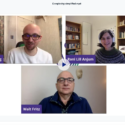
Complexity; simplified
Complexity; simplified Causation in manual therapy scenarios is often discussed as tissue (or pathology) specific issues. But causation is complex, and in this podcast, I joined Rani Lill Anjum, Ph.D. in philosophy at the Norwegian University of Life Sciences. Rani has authored several books, including Rethinking Causality, Complexity, and Evidence for the Unique Patient, which… Continue Reading

Person-Focused Manual Therapy and the Singer
Person-Focused Manual Therapy and the Singer Recently, I had the extreme pleasure to take part in a Facebook Live interview with Rachel Lynes, from The Sing Space. We unpacked a wide range of topics, including does fascia matter, how manual therapy impacts the singer (from tissues right up to the brain), and many more. We… Continue Reading

Manual Therapy in Voice/Swallowing Disorders: An Introduction to the Evidence. An online course.
Manual Therapy in Voice/Swallowing Disorders: An Introduction to the Evidence. An online course. The Course NOTE: The content of this 2-hour Introduction to the Evidence and Approach Online Course is already included in the 8-hour Hands-On Online Course. There is no need to purchase both courses. This standalone course mirrors the pre-seminar online module for… Continue Reading
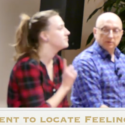
The feeling of a voice (or any other) issue
The feeling of a voice (or any other) issue What does it FEEL like? -The Feeling of a Voice IssueThe approach used in my Foundations in Manual Therapy: Voice and Swallowing Disorders requires a bit of a different framing of the issue. Traditionally problems, be they voice, swallowing, or a variety of other issues facing… Continue Reading
Cover Songs
–Cover Songs- Finally, a post unrelated to manual therapy. Sort of. I thought that I’d have some fun sharing a bit about my music tastes and possibly find out a bit about your tastes. I’ve loved what I do for a living for nearly all of my career, whether it was in the early days… Continue Reading
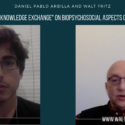
Podcast with The Knowledge Exchange on Biopsychosocial Aspects of Manual Therapy
Podcast with The Knowledge Exchange on Biopsychosocial Aspects of Manual Therapy I was fortunate to have had the opportunity to spend an hour today with Sydney, Australia-based personal trainer, exercise scientist, and exercise physiologist Daniel Pablo Arbillo. We spoke at-length about incorporating aspects of the biopsychosocial approach in manual therapy and, specifically, how my approach… Continue Reading

